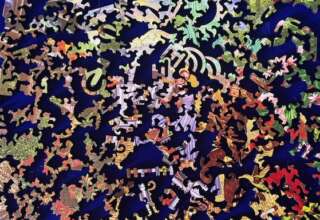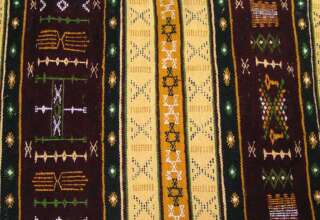
Although it is difficult to generalize about African traditional cosmology and worldviews, a common denominator among them is a three-tiered model in which the human world exists sandwiched between the sky and the earth (including the underworld)¬ a schema that is not unique to Africa but is found in many of the world’s religious systems as well. A porous border exists between the human realm and the sky, which belongs to the gods. Similarly, although ancestors dwell inside the earth, their activities also interject into human life, which is why they are referred to as the living dead. African cosmologies, therefore, portray the universe as a fluid, active, and impressionable space, with agents from each realm bearing the capabilities of traveling from one realm to another at will. In this way, the visible and invisible are in tandem, leading practitioners to speak about all objects, whether animate or inanimate, as potentially sacred on some level.
Thus, we find that the sacred world of African communities—and I would suggest African organizations—is filled with animating spirits that are interconnected in a way that produces a setting which, as Olupona suggests, is “flued, active and impressionable.” With this broad framework in place, I turn to five themes that are specific to Theory A. It is worth pondering how each of these themes might be engaged in the engagement of leadership in our own Western—but also postmodern (Bergquist, 1993)—organizations of the mid-21st Century.
Nomadic Leadership
The current Sub-Sahara Black population originally came from West Africa (what is now Ghana, Nigeria and Sierra Leone) (McEvedy, 1995). These West Africans, called “Bantus,” built a migrant (hunting and gathering) society, in contrast with the sedentary (agricultural) societies of many African people whom they conquered. As migrant people, the Bantus were rooted in family and clan, rather than in organizations or nation states.
Wandering About
This form of nomadic leadership in many ways parallels forms of leadership that are found in Judaic societies. A great diaspora is to be found in the history of both Jews and Bantus. While the early movement of the Bantus often came with the conquest of other African people, we are all clearly aware that the later dispersion to other parts of the world (particular North America) came with the trading of vanquished African people as slaves. Partly compelled by the forced movement as a result of persecution and slavery, the populations (and culture) of both the Jewish and African population are quite notable, with major populations of Jews and many African descendants living in Europe and the United States.










Charly Wiliamse
August 16, 2021 at 10:23 pm
I have thought so many times of entering the blogging world as I love reading them. I think I finally have the courage to give it a try. Thank you so much for all of the ideas!
power bi course
December 7, 2021 at 7:29 am
Thanks for sharing information.